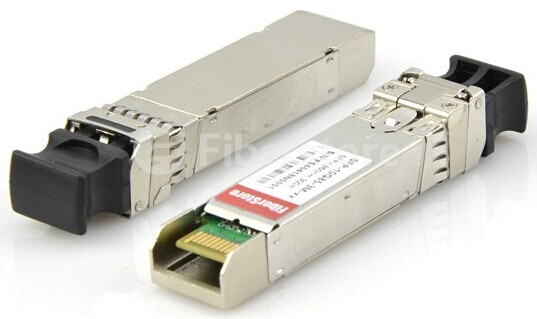What is the SFP or SFP+ MSA?
A small form-factor pluggable (SFP) is a type of transceiver device that has been standardized by the MSA (multi-source agreement). The MSA will define the characteristics of the system and is typically an agreement between multiple manufacturers. The agreements guarantee that any SFP or SFP+ device from any vendor will function properly. This article will give you a more comprehensive introduction to the SFP and SFP+MSA.
Both SFP and SFP+ optical transceivers are standardized by MSA. These documents strictly define sufficient characteristics of an optical transceiver so that system (like Ethernet switch, Router, and media converter) vendors may implement ports on their devices, therefore, MSA compliant pluggable optical transceivers (SFP or SFP+) from any vendor will function properly.
Pluggable optical transceivers are physically composed of a small printed circuit board (PCB) containing electronic circuity, with an electrical PCB “edge connector” at one end and, typically, a fiber optic connector (dual LC-type in the case of SFP/SFP+ modules) at the other, packaged in a metal housing including a release latch. The basic function of the device is to convert electrical transmit data from the host into an optical signal transmitted onto a connected fiber optic cable, and, in the other direct, convert a received optical signal into an electrical one to be sent to the host system over the edge connector.
Mechanical Interface
- Mechanical dimensions of the device (H: 8.5mm, W: 13.4mm, D: 56.5mm)
- Transceiver edge connector to host PCB-mounted electrical connector mating
- Host board mechanical layout (location/size of solder pads, etc.)
- Insertion, Extraction and Retention forces
- Labeling
- Bezel design considerations for host systems
- Electrical connector mechanical aspects
- Cage assembly dimensions (hollow cage mounted in host system)
- Pin definitions
- Timing requirements and Status I/O
- Module definition interface and data field description
Besides, the Digital Diagnostics Monitoring (DDM) feature common in many modern SFP/SFP+ transceivers as defined in SFF-8472 MSA specification. “D” in GLC-LH-SMD represents the DDM function according to the industry standard MSA SFF-8472. The SFF-8472 added DDM interface and outlined that DDM interface is an extension of the serial ID interface defined in GBIC specification, as well as the SFP MSA. For example, Brocade E1MG-SX-OM compatible 1000BASE-SX SFP from Fiberstore is with built-in DDM function and compatible with SFP MSA and SFF-8472.
MSAs, like most standards efforts, are important primarily because they can give customers a choice in suppliers from which they purchase products. Freedom of choice is the foundation of the efficient operation of markets. Customers in the marketplace should have the benefit of multiple independent suppliers, each competing to gain a share of the market. This behavior forces suppliers to be as efficient and creative as possible, driving down costs and offering customers the widest array of options.
It is true that some system vendors have attempted to subvert the standardizing value of the MSAs. The most common scheme is to write a unique code into some of the undefined memory in the EEPROM of each SFP/SFP+. When the transceiver is inserted into the host switch, its EEPROM is read, and, if the code is “incorrect” the module is rejected as “incompatible”. But Fiberstore can do it. At present, Fiberstore offers a comprehensive brands compatible solution of the transceivers which can meet the demands for Cisco, HP, Juniper, NETGEAR, Brocade etc.
